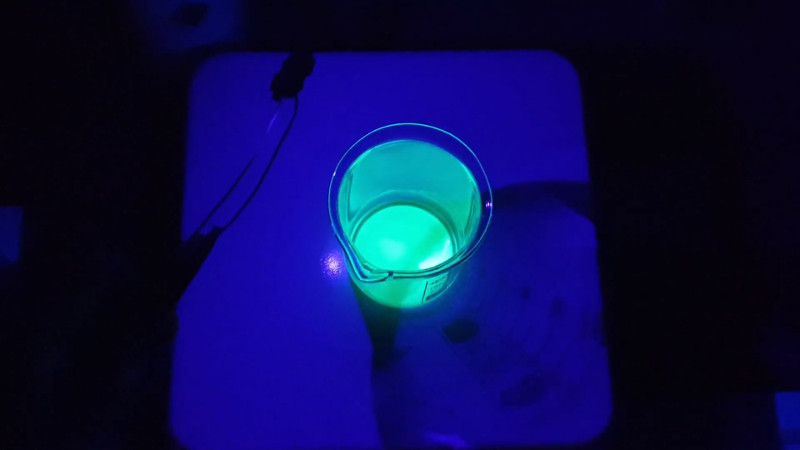Phosphors are key to a whole swathe of display and lighting technologies. Cathode ray tubes, vacuum fluorsecent displays, and even some white LEDs all use phosphors to produce light. [Hydrogen Time] decided to make a green phosphorescent material, and has shared the process on Youtube, embedded below.
The aim is to produce zinc sulfide crystals doped with copper impurities. This creates a phosphor with a familiar green glow. [Hydrogen Time] starts by noting that it’s important to make sure all chemicals used are of good quality, as even slight impurities can spoil the final product.
Zinc sulfide is made into an aqueous solution, before a highly diluted copper sulfate solution is added, along with ammonium chloride to act as a flux. The mixture is stirred, before being heated in a tube flushed with argon. After firing, the phosphor is washed with water and allowed to cool.
The final product is demonstrated to glow a vibrant green under UV light, showing the process to be successful. [Hydrogen Time] intends to use the homebrew phosphor in future work to produce a display. It recalls us of [Jeri Ellsworth], producing her own EL wire at home. Video after the break.
















So, the phosphorus isn’t obtained from distilling urine?
Doesn’t look like it…. Once again HAD disappoints after I get past the headline tease.
Despite being called collectively “phosphors”, very few phosphorescent material actually contain phosphorus atoms. Most inorganic phosphors are either sulphides or silicates.
In a way, it’s like neon lamps. Despite the name, most of them don’t contain neon, as neon emits red light.
Or distilling Tonic water.
Distilling? How about drinking! First thing I thought of was a Gin and Tonic under UV light.
It’s me, or we’re confusing fluorescence and phosphorescence?
Nope, this really is about phosphorescence
In the video you can clearly see the afterglow when the light source is removed. And glow in the dark (phosphorescence) is what it’s all about here. The effect appears to be fluorescence at first because it lights up immediately when the light source is held above it, but this all quite normal especially with UV which is the color that has the highest “efficiency” for the effect.
Oh good old times. I did this when I was in high school. Getting it to afterglow for a reasonable amount of time was always the big issue. I just managed a few seconds, maybe a bit less then he. Modern Phosphors are typically not based on ZnS anymore but for example garnets.
even the ZnS ones are still being widely used, but in a DIY enviroment you’ll always have an uphill battle with contamination, for good results, 99.9% pure still isn’t pure enough ;-)